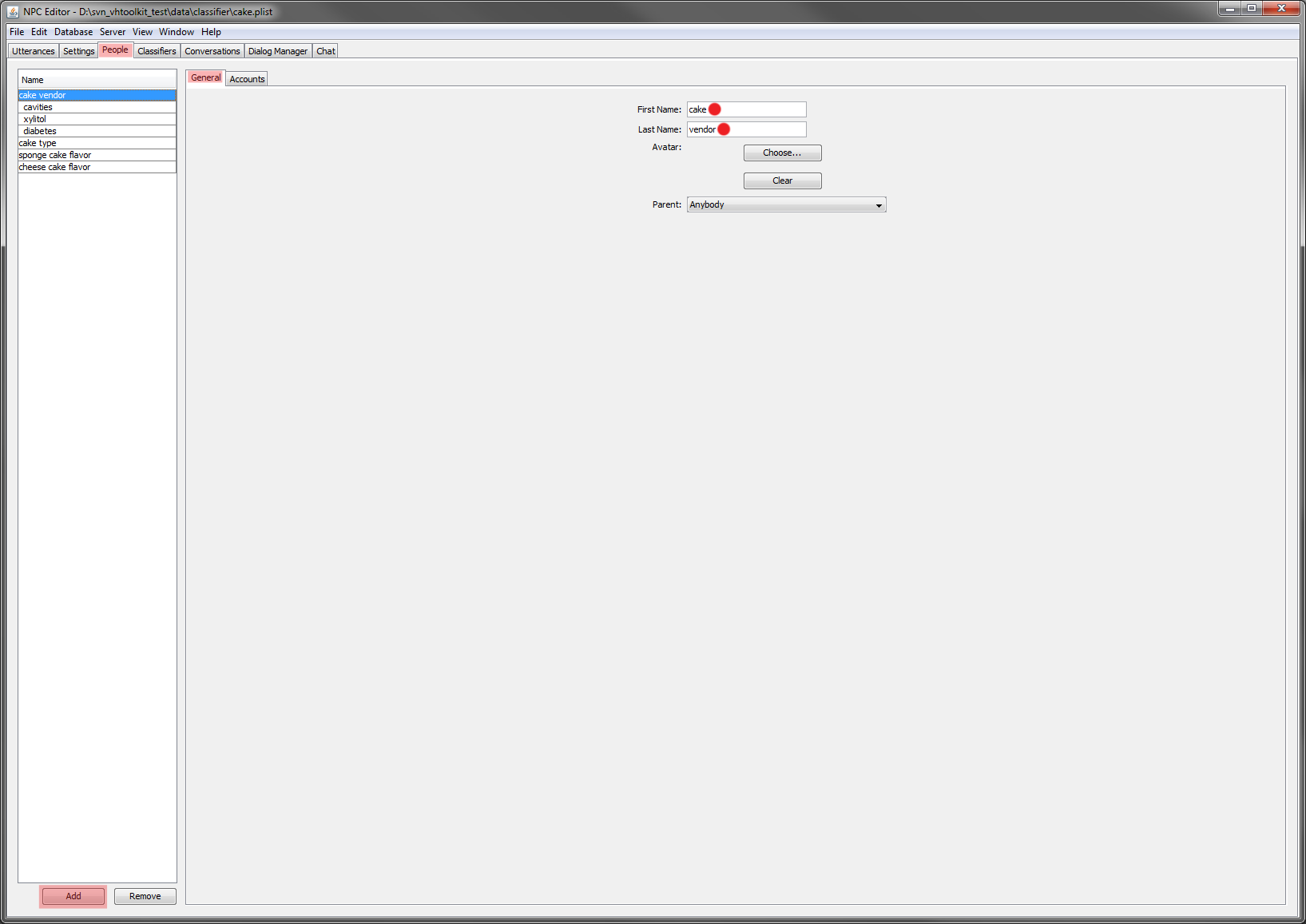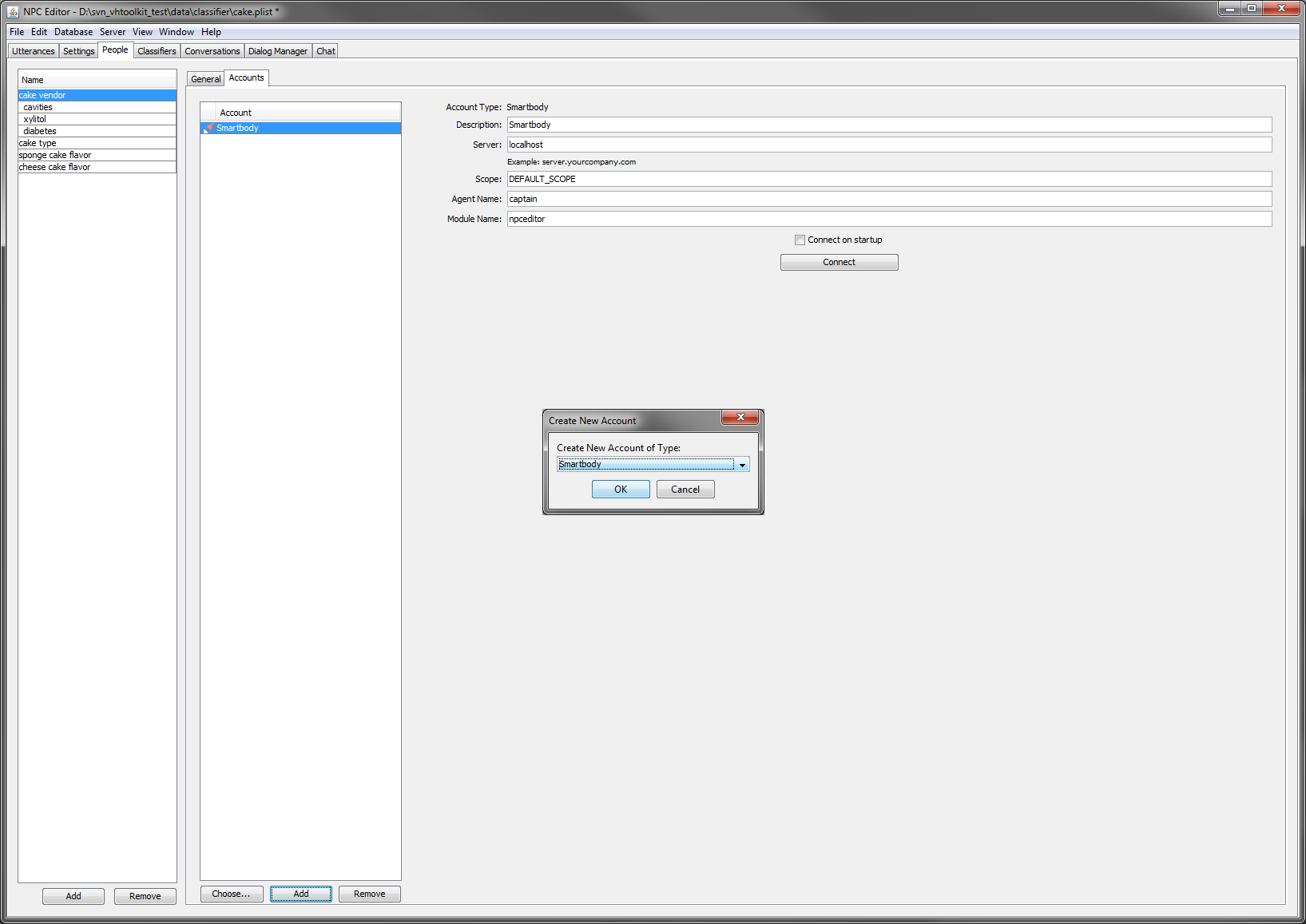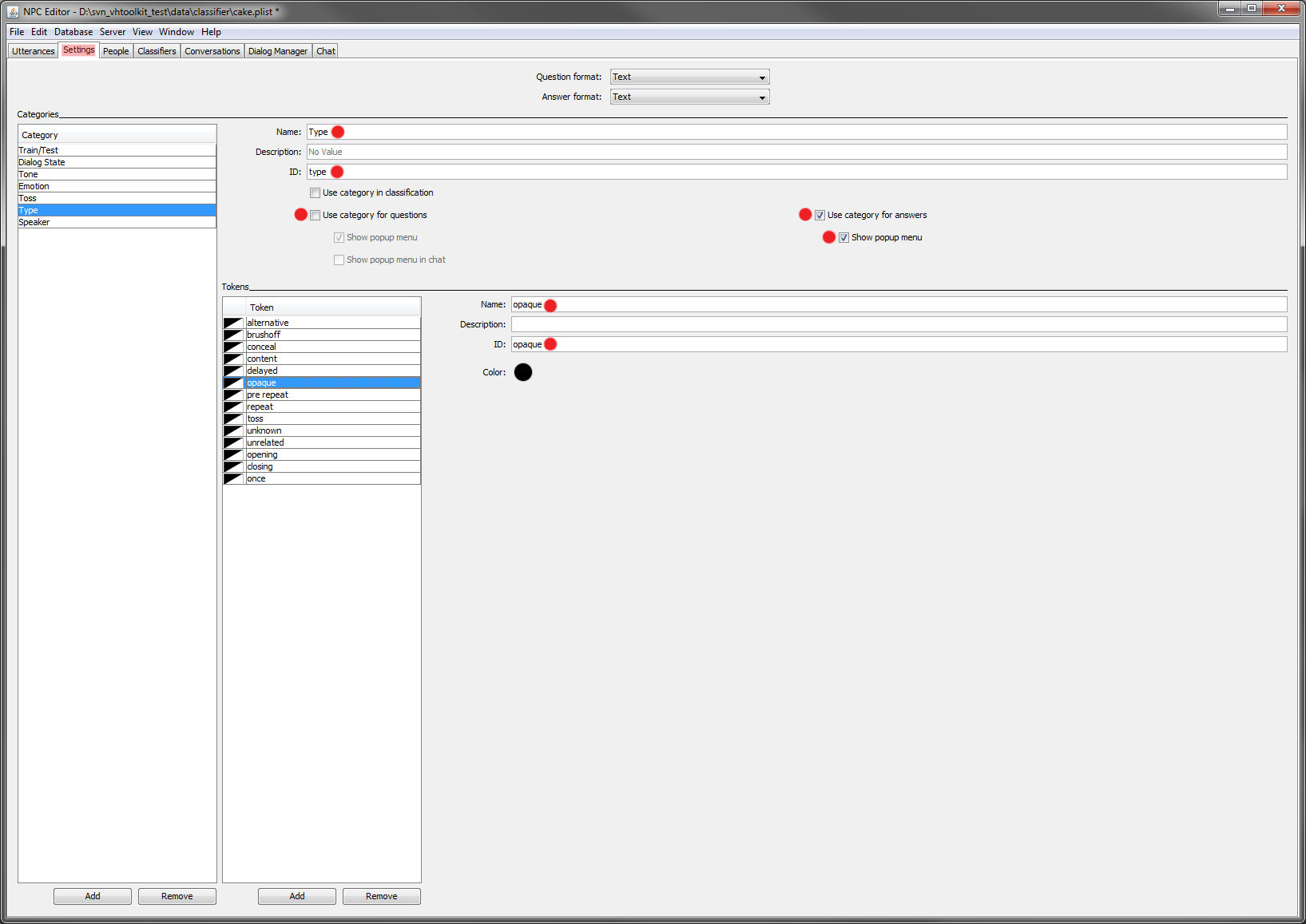Page History
...
- Select '
File->New' to create a new plist. Save it as 'cake.plist'. Inside
cake.plist, select the People tab and create a new person named 'cake vendor'.This person will handle the initial greeting exchange.Info title A note on "People" in NPCEditor Each "person" in a plist represents a domain, which contains the list of answers the system chooses from. Domains can have inheritance, so for example greetings could always be accessible, while other details might only be available at specific points in a conversation. Make sure you set both 'first name' and 'last name' for your person. If your person/domain's name is just one word, you can set the last name or the first name to be a space or you can split the word into 2 parts, one for the first name and the other for the last name, such as '
CakeVendor' or 'Cake Vendor'- Now define the connection NPCEditor uses to communicate with the rest of the Virtual Human Toolkit architecture. Select the 'Accounts' tab, then click on 'Add' and select 'Smarbody'. Test the connection by clicking on 'Connect': the button will change to 'Disconnect' and the row corresponding to the NPCEditor in the Launcher will become green. This should be defined once and associated only to one of the defined persons: the one that defines the initial domain
- Next select '
scriptable' as the type of dialog manager in the 'Conversations' tab. A new 'Dialog Manager' tab next to 'Conversations' will appear containing an initial script for a dialog manager. The script is written in Groovy and can be edited to suit your needs. - Set the parent property of '
cake vendor' to 'Anybody' (default value). This step defines an inheritance hierarchy among the various domains. In this case the 'cake vendor' domain inherits the utterances defined for the 'Anybody' domain. - Create all the other persons defined in the dialog graph above: '
cavities', 'xylitol', 'diabetes', 'cake type', 'sponge cake flavor', 'cheese cake flavor'. Set the parent property of each of them to the 'Anybody' domain. - Create a '
Type' and 'Speaker' category in the 'Setting' tab. The first is used by the default dialog manager script to handle off topic utterances from the user. The second (speaker) needs to be set for proper communication with the rest of the modules in Virtual Human Toolkit. Note that the DM uses the ID of a category for selection, so you need to change the autogenerated key to something unique, such as the Name, so Type's ID would be "Type". - Make sure the '
Toss' category is set to be included in the answers and used by the classifier. This completes the setup, and we can move on to creating new content.
...
Overview
Content Tools
Activity



